2nd Istanbul Design Biennial:
The Future is Not What It Used to Be

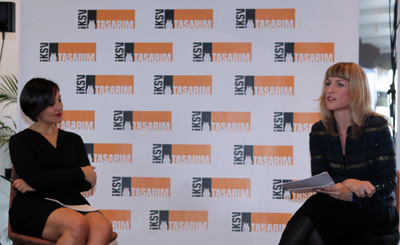



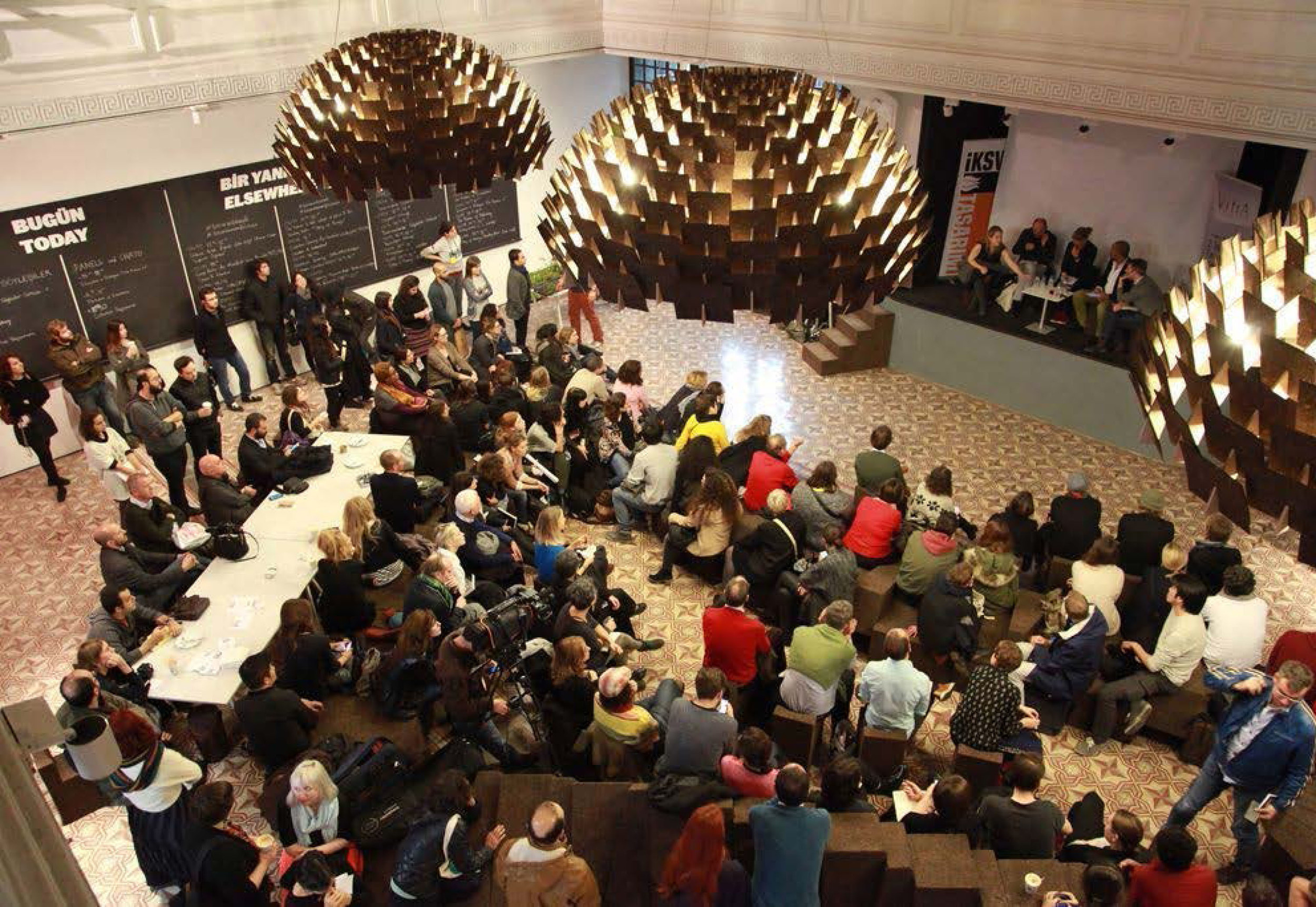
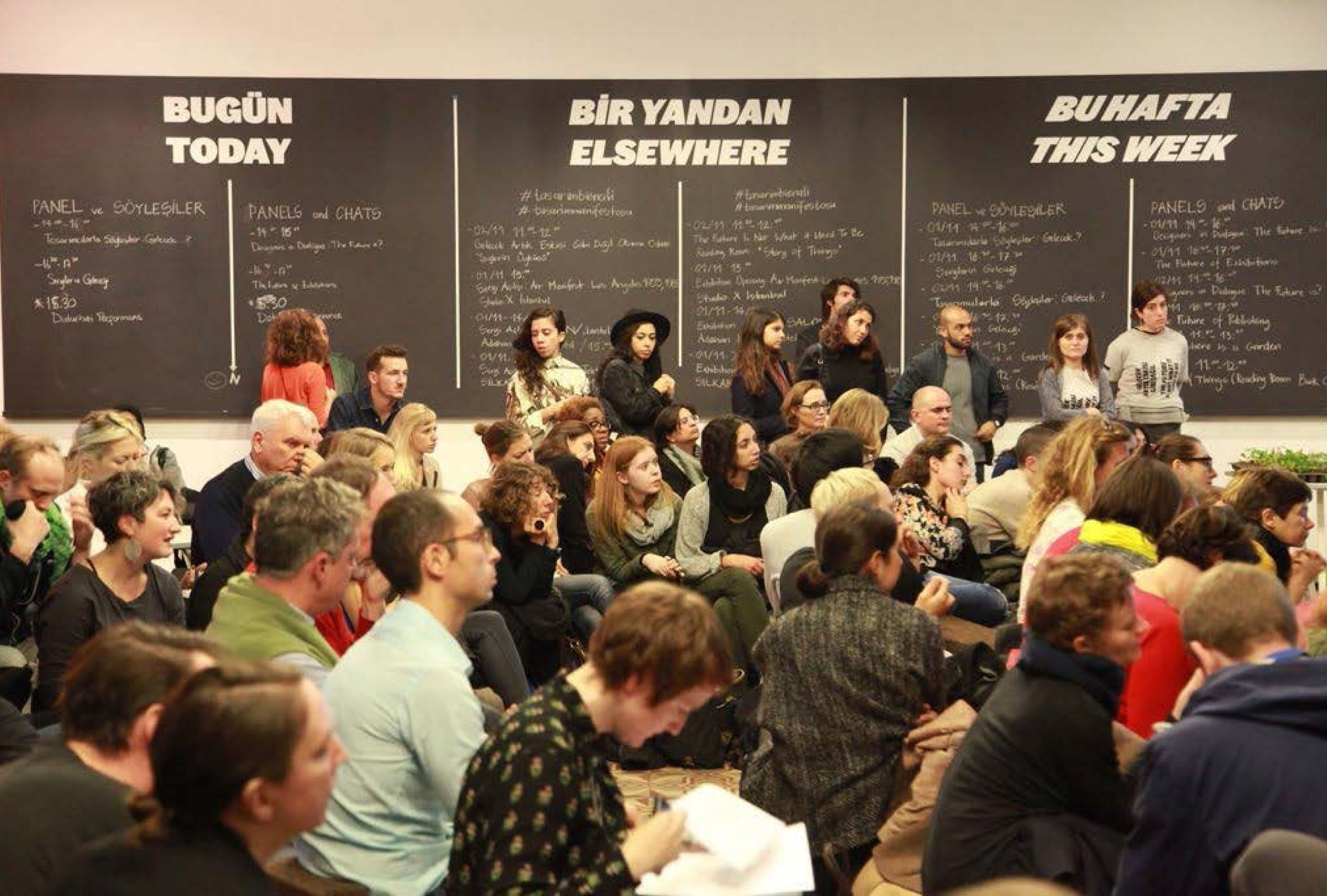

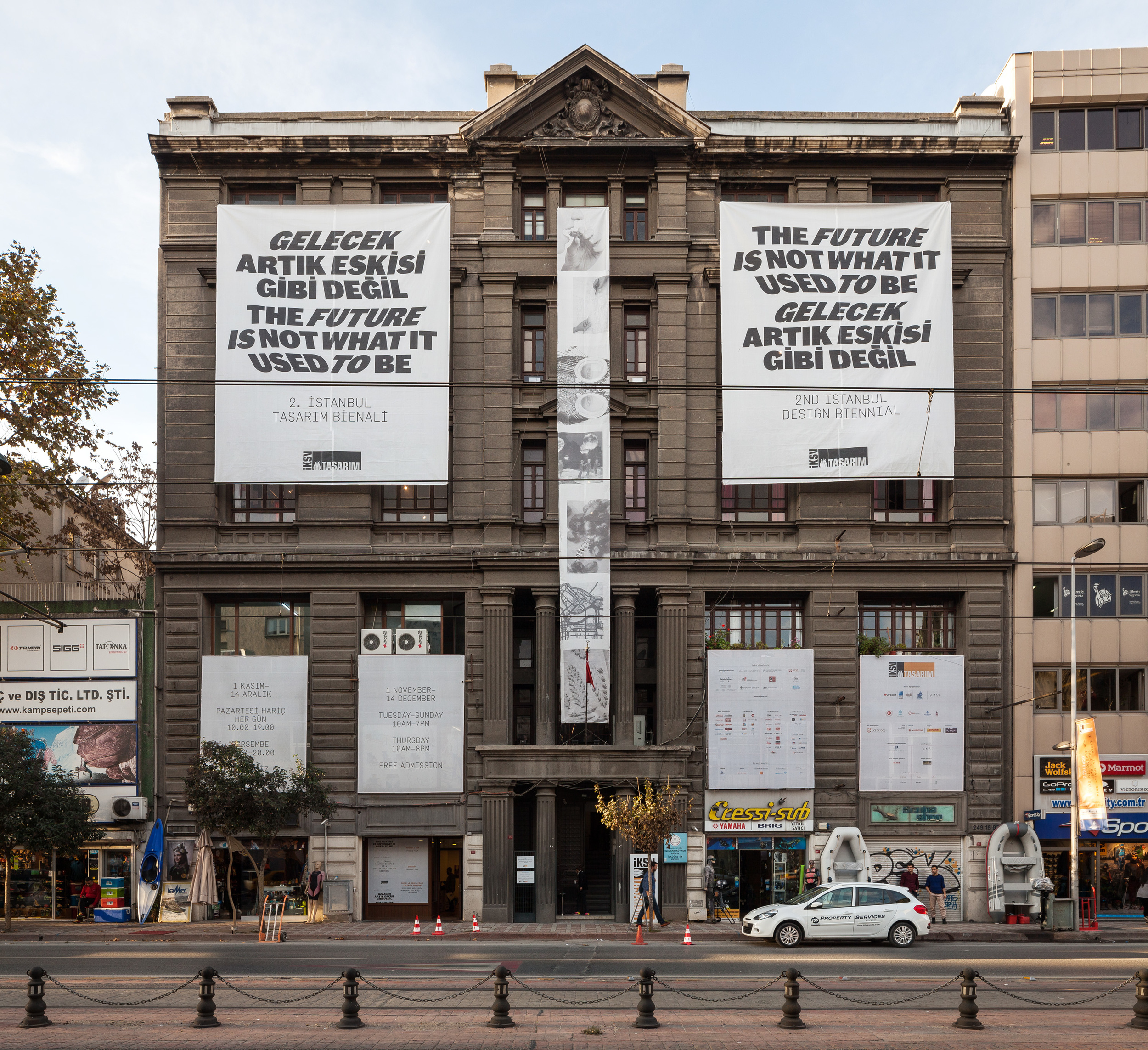
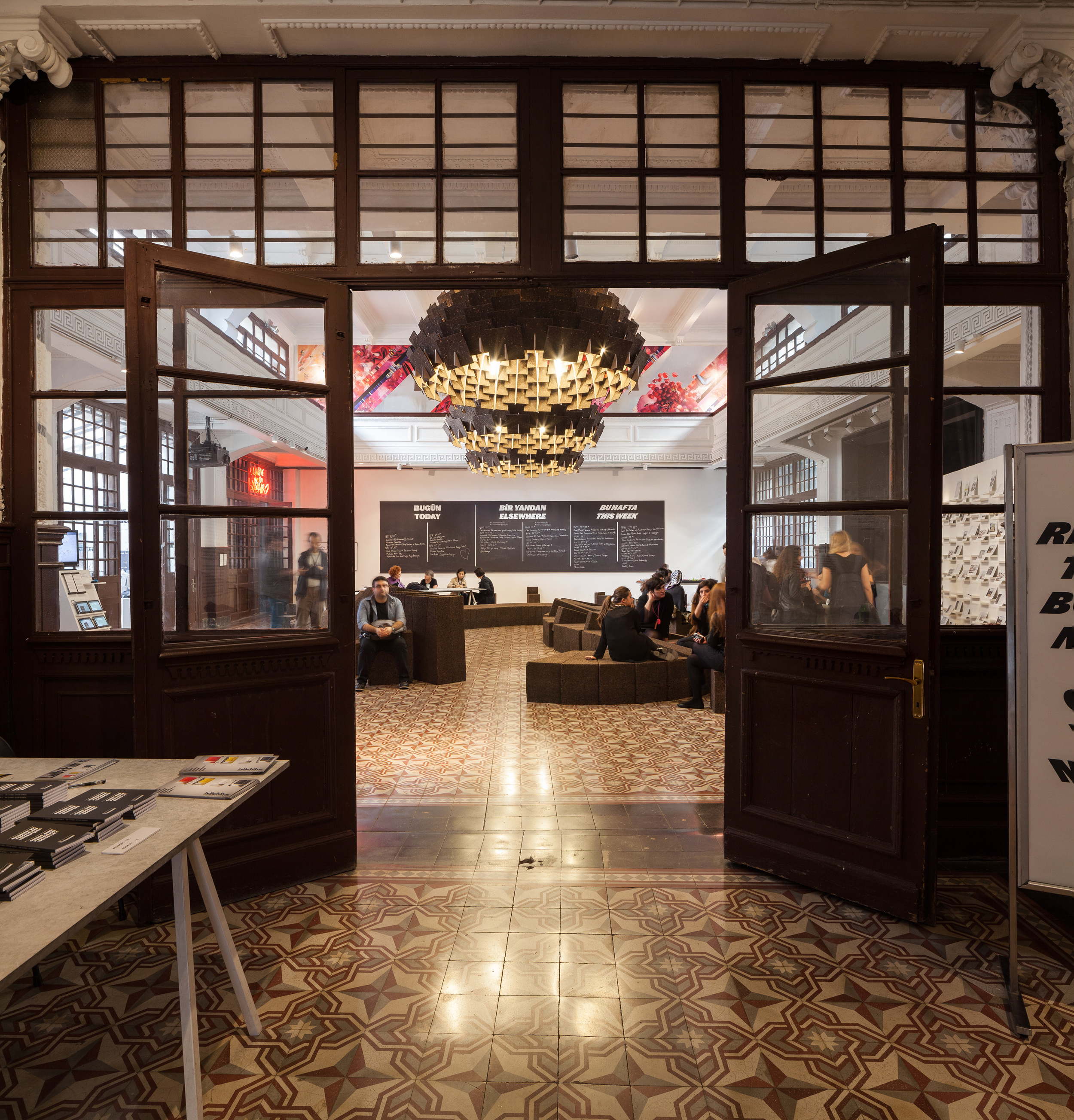
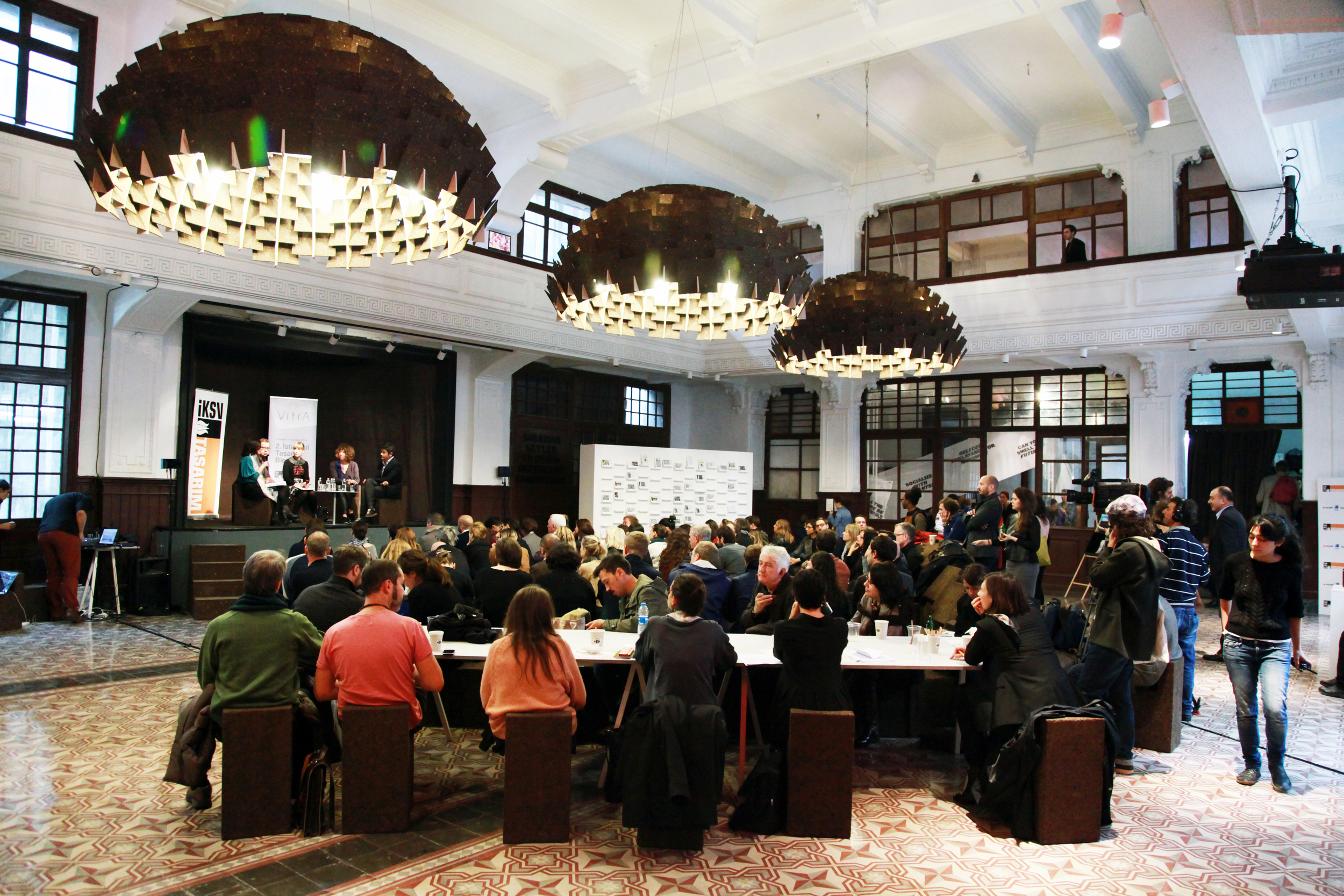
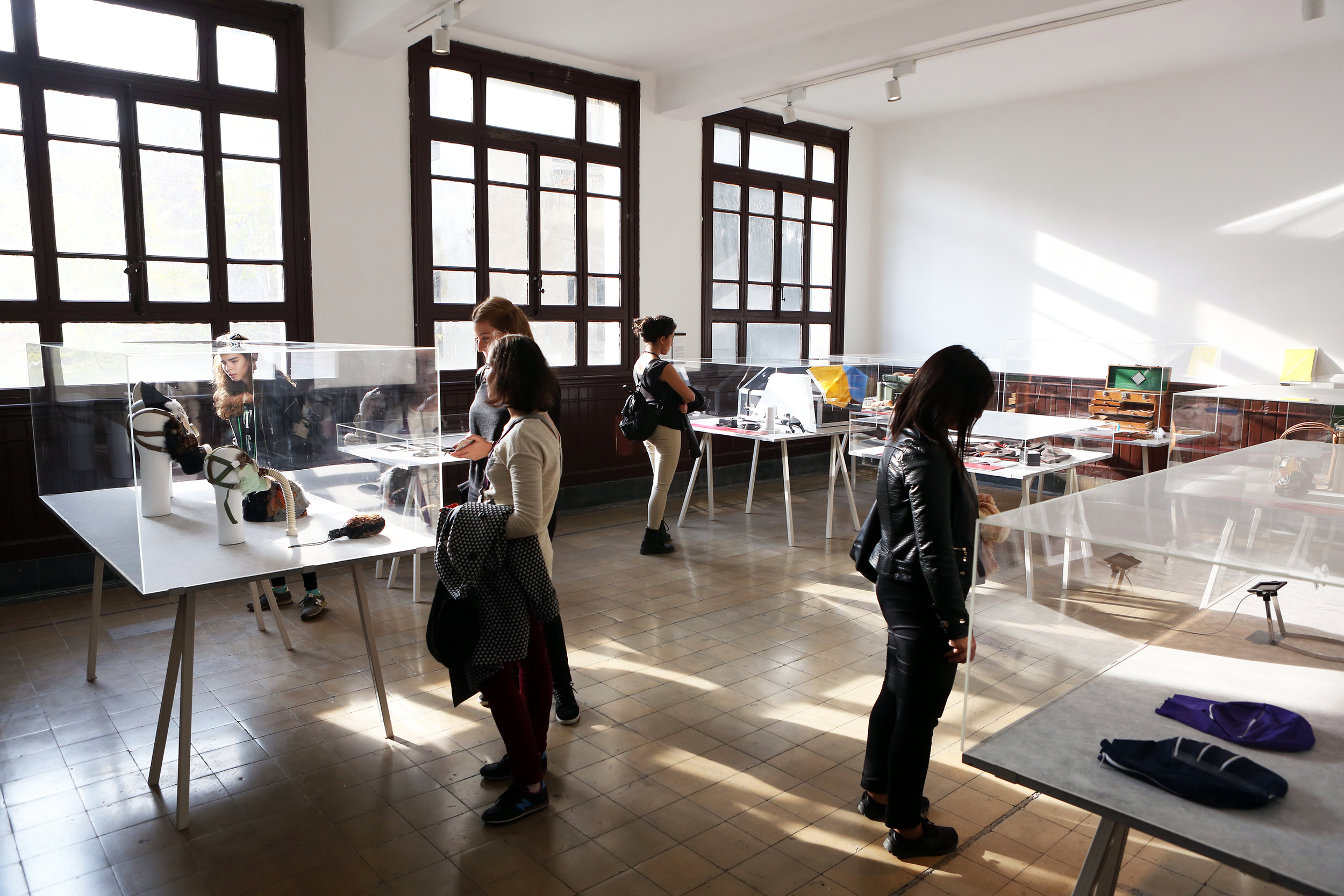
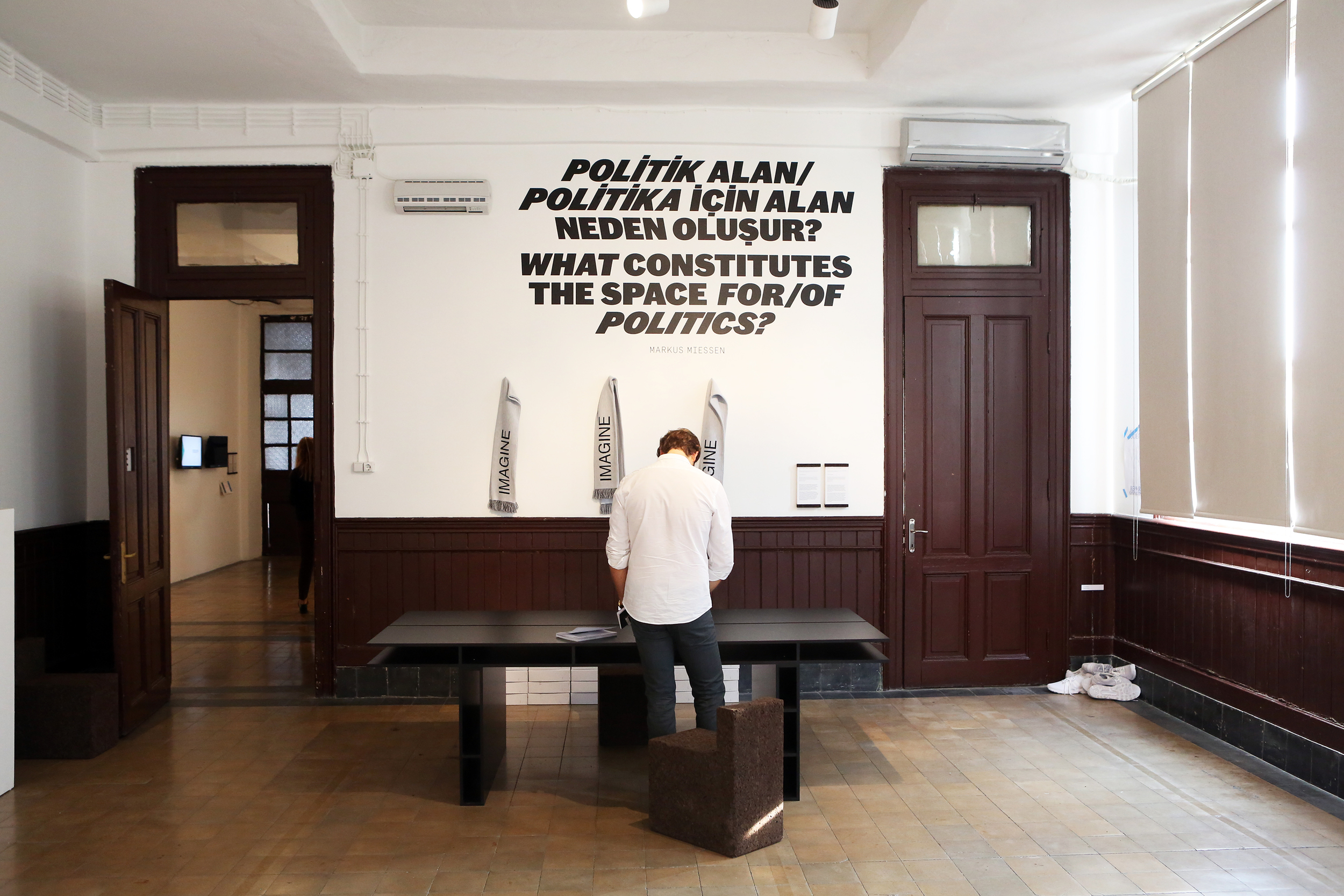
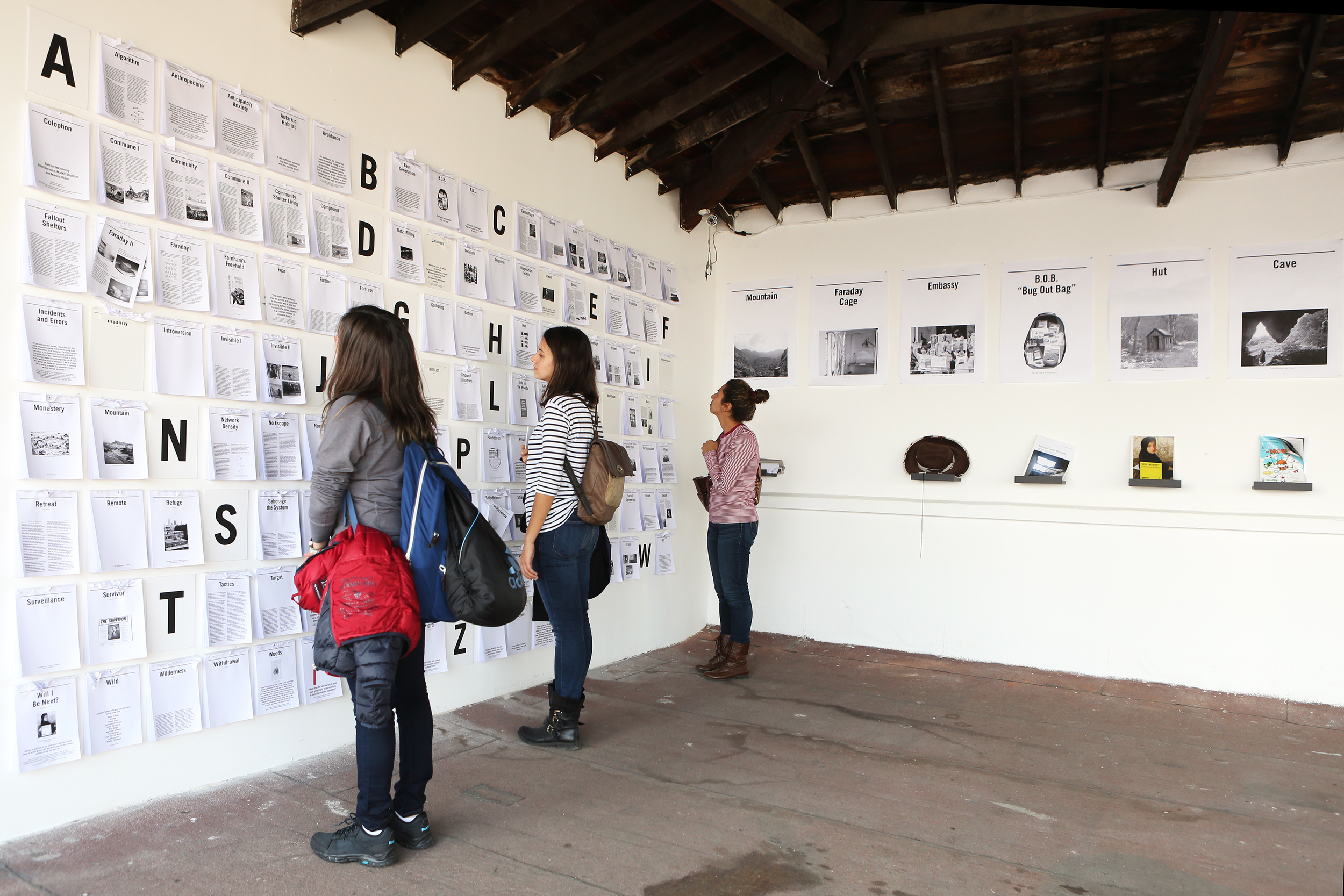



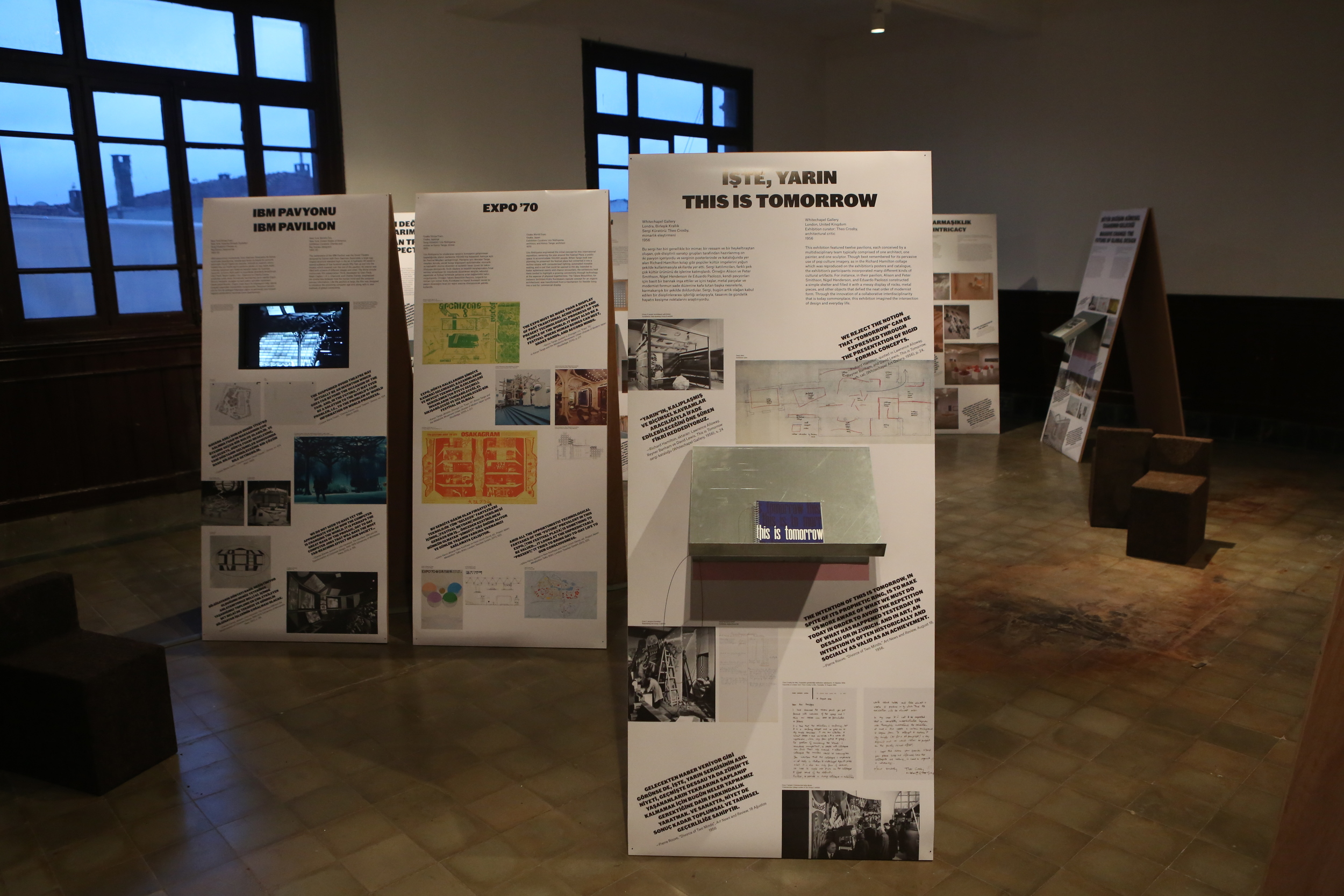
Location:
Greek School, Istanbul, Turkey
Organization:
IKSV, Istanbul
Dates:
November 1 - December 14, 2014
Curator:
Zoë Ryan
Associate Curator:
Meredith Carruthers
Exhibition Design:
SUPERPOOL and Project Projects
Graphic Design:
Project Projects
Publication:
The 2nd Istanbul Design Biennial: The Future is Not What It Used To Be
IKSV/ Hatje Kantz, 2014
Editors:
Zoë Ryan and Meredith Carruthers
Publication Design:
Project Projects
Biennial Website:
www.2tb.iksv.org/index.asp
Under the overarching title, The Future Is Not What It Used To Be, the Second Istanbul Design Biennial invited designers, architects and others to rethink the manifesto as a catalyst for critical thinking in design. As a platform for inviting inquiry and exchange, the biennial asked: What is the future now? How do we define the future? Who defines it? And perhaps most importantly, whose future are we talking about? In the early years of the twentieth century, a time of rapid transition, artists, architects, and designers responded with manifestos: grand statements of purpose and visionary plans. Today, design has become inextricably linked to every aspect of our lives. From our buildings, streets, education, food, and health care to our communications, political, and economic systems, the types of work that designers are tackling has grown exponentially. The Second Istanbul Design Biennial harnessed the idea of the manifesto but invited people to rethink its role in contemporary life. Could the manifesto be rethought to question the role of design and suggest alternatives from multiple points of view, from different generations and places? In a more multilayered world, it is possible for manifestos to be more collective and accumulative, rather than declarative and univocal? Rather than only written statements, could a manifesto be an object, a building, a way of working, a methodology or approach, a system or network?
There were 53 projects in the biennial, conceived of by designers and architects working in more than twenty countries. The projects were presented in “departments” – rather than themes – that borrowed from the language of the grocery or department store, as much as from the academy or the laboratory. The projects by practitioners working in Australia, China, France, Japan, Mexico, the Netherlands, and the United States, among others, constituted alternative manifestos in the form of conversations, household objects, fashion accessories, menus, maps, buildings, food, postcards, magazines, smells and visual languages. They conveyed a multitude of points of view that took into account social, cultural, and economic factors while advocating for design to be a decisive factor in future decision-making processes. Rather than statements of purpose that are closed to interpretation, the works posed questions and proposed alternative directions and outcomes that are open-ended and encourage interaction and debate. The projects encouraged us all to pause look to the future but perhaps most importantly they urge us to look more closely at our present moment, at what’s going on around us, now. Ultimately, the biennial aimed to encourage a rethinking of our designed environment by selecting projects that depart from previously assigned definitions of how things should look and function in order to encourage a more multifaceted and context-driven reexamination of the objects, buildings, and environments we interact with daily.
Talk to Us | Organized as part of the biennial planning process, the curators organized a series of salons in Istanbul that engaged almost a hundred architects, designers, curators, and critics in discussions around the theme of the biennial, ensuring the active participation of the local community and generating important ideas for biennial projects and programming.
Project List
Personal Department:
The Moonwalk Machine—Selena’s Step, Sputniko!
Consider Beauty, Studio Frith & Thirteen Ways
Still Life to Living Pictures, Atelier Manferdini: Elena Manferdini
Jardin d’hiver, Dice Kayek: Ayşe Ege and Ece Ege
In The Future, Everyone Will Be Heroic for 1.5 Minutes, Sarraf Galeyan Mekanik: Memduh Can Tanyeli, Erhun Erdoğan and Emine Seda Kayım
BIRDY 2214, Meriç Canatan and Fatosh Erhuy
Ownership of the Face, Kristina Cranfeld
Manifesting the Look of Love, Haelo Design: Helen Maria Nugent and Ron Kirkpatrick
Poly, giffin’termeer: Jess Giffin and Jim TerMeer
Mapmaker Manifesto, Stamen Design: Beth Schechter and Eric Rodenbeck
New Survivalism, Jessica Charlesworth and Tim Parsons
Norms and Standards Department:
N°41 Workoutcomputer, BLESS: Desiree Heiss and Ines Kaag
Dyslexie Typeface, Christian Boer
Nap Gap, J. Mayer H. und Partner, Architekten: Jürgen Mayer H. with Wilko Hoffmann and Julien Sarale
smart design (. . .) smart life, Jacob de Baan, Giorgio Caione and Rianne Koens
Justaddwater, Koz Susani Design: Defne Koz, Marco Susani
LEPSIS: The Art of Growing Grasshoppers, Mansour Ourasanah
Designing for the Sixth Extinction, Alexandra Daisy Ginsberg
New Energy Landscapes, Sean Lally
Incomplete Manifesto for The Night, Clio Capeille
Towards a Universal Mundane Manifesto, Emmet Byrne and Alex DeArmond
Resources Department:
A Reading Room, Future Anecdotes Istanbul: Can Altay and Aslı Altay
Open Manifesto, FormaFantasma: Simone Farresin and Andrea Trimarchi
Palamut Timeline, Didem Şenol of Lokanta Maya and Gram, with Elif Esmez, Esra Aca
Rebuild the Electronic and Digital Tools, Coralie Gourguechon
NASALO Dictionary of Smell, Sissel Tolaas
This sea of sugar knows no bounds, AVM Curiosities: Tasha Marks
Hacking the Modern Kitchen, Gastronomika
Diario, Moisés Hernández
knowledge-tools-memory, Studio mischer’traxler: Katharina Mischer and Thomas Traxler
Crafted in Istanbul, Seda Erdural, Barış Gümüştaş and Bilal Yilmaz
Repair Society, Gabriele Oropallo, Joanna van der Zanden, and Cynthia Hathaway
Cultures of Assembly, Studio Miessen
Imagining Our Shared Future, Atatürk Library, Alexis Şanal and Ali Taptık
Civic Relations Department:
Public Drawing, Atelier Bow-Wow: Yoshiharu Tsukamoto and Momoyo Kaijima
Use of Shores, a Micro-Manifesto on Micro-Urbanisms, İyiofis: Elif Ensari and Can Sucuoğlu
The Moment for the Generic is Now, fala atelier: Filipe Magalhães and Ana Luisa Soares
#occupygezi architecture, Architecture for All (Herkes için Mimarlık)
The Encounterculture or, Seven Ways to Participate, SIBLING: Amelia Borg, Nicholas Braun, Jonathan Brener, Jessica Brent, Jane Caught, Qianyi Lim, Timothy Moore, and Alan Ting
Retreat, dpr-barcelona: Ethel Baraona, Studio-X; GSAPP: Marina Otero and FAST, The New Institute, Rotterdam: Malkit Shoshan
Design Activism: A Contemporary Design Manifest, Manufakturist: Mia Bogovac, Matea Bronić, Maša Milovac, and Kristina Volf; GOTWOB: Begüm Çelik and Berk Şimşek
TWTRATE, Cansu Cürgen, Eren Tekin, Yelta Köm, Barış Gümüştaş, Avşar Gürpınar, Yağız Söylev and Arzu Erdem
Gümüştaş, Avşar Gürpınar, Yağız Söylev and Arzu Erdem
Who Builds Your Architecture?, WBYA?: Kadambari Baxi, Jordan Carver, Laura Diamond Dixit, Tiffany Rattray, Beth Stryker, Mabel O. Wilson
How To Do Too Kadıköy, 72 Hour Urban Action: Kerem Halbrecht and Gilly Karjevsky; with Tasarım Atölyesi Kadıköy (TAK): Onur Atay, Omer Kanıpak, Sıla Akalp
Retroactive Manifesto, Rural Urban Framework: Joshua Bolchover and John Lin
UMK: Lives and Landscapes, Dunne & Raby: Anthony Dunne and Fiona Raby
Phoenix Declaration, Arctic Perspective Initiative (API): Matthew Biederman and Marko Peljhan
The Cultural Sauna, Åbäke
ABC Manifesto Corporation Writers and Consultants, disturbATI collective
Broadcast Department:
Kontraakt Radio Station, H. Cenk Dereli, Hayrettin Günç, and Yelta Köm
Unfacebook, Vibok Works: Paula Alvarez
140journos: Data Concretization, Institute of Creative Minds: Cem Aydoğdu, Engin Önder, Hilal Koyuncu, İgal Nassima, Meriç Şeker
Growing Manifesto, Something & Son: Andrew Merritt and Paul Smyth